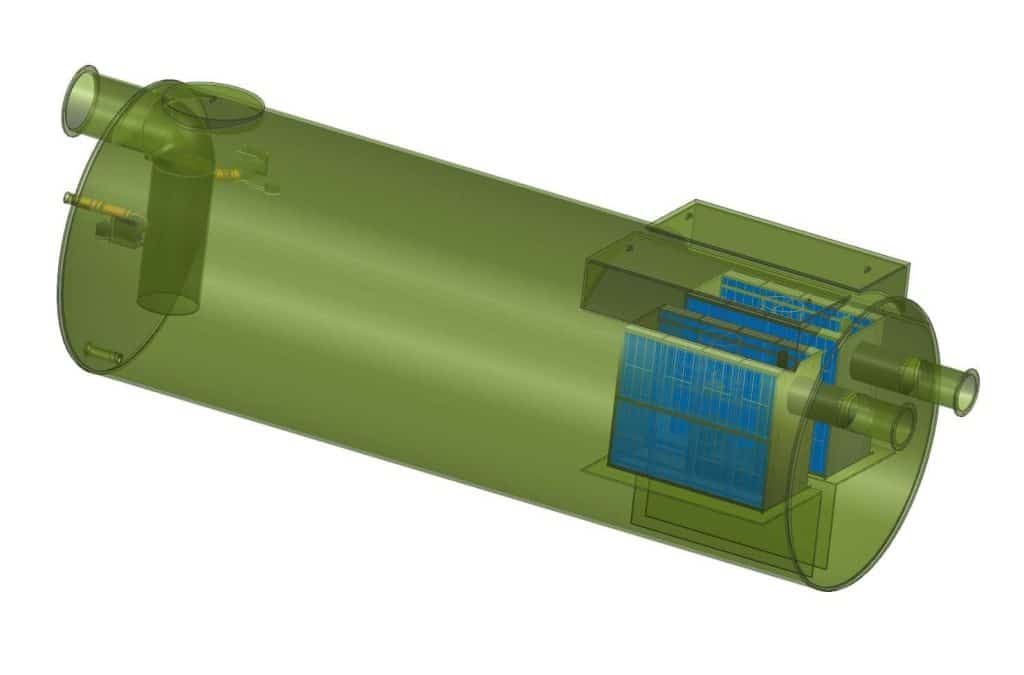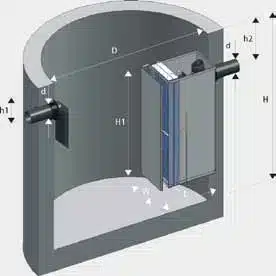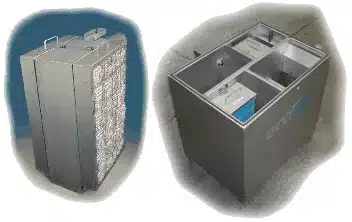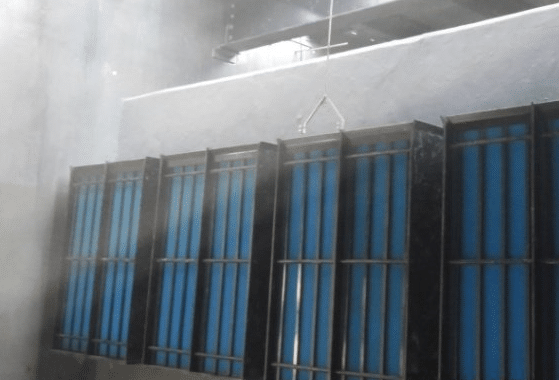Do you know about the hidden protectors of Connecticut’s waterways? Under our feet, a complex system fights pollution, keeping our environment safe. These heroes are Connecticut Below Ground Oil Water Separators. They are key in managing stormwater and protecting the environment.
These separators are vital in treating wastewater. They remove oil, grease, and debris from stormwater. This is crucial in urban and industrial areas where pollutants easily enter our water.
With stricter environmental laws and more awareness, the need for these separators has grown. Connecticut is committed to clean water, using these systems in many places. This leads to cleaner water and a healthier environment for everyone.
Key Takeaways
- Freytech Inc. Connecticut Below Ground Oil Water Separators are essential for stormwater management
- These systems effectively remove oil, grease, and debris from runoff
- Oil water separators contribute significantly to environmental protection
- Implementing these systems helps meet stringent wastewater treatment regulations
- Proper use of separators leads to cleaner waterways and a healthier ecosystem
Understanding Connecticut Below Ground Oil Water Separators
Underground oil water separators are key in managing industrial wastewater in Connecticut. They remove oil and other contaminants from water before it’s released. This protects the environment.
Definition and Purpose
Oil-water separator systems separate oil, grease, and other hydrocarbons from water. They’re vital at gas stations, parking lots, and industrial sites where oil spills can happen. They catch pollutants, preventing harm to our waterways.
Types of Oil Water Separators
In Connecticut, there are two main types of underground oil water separators. Conventional gravity separators use density differences to separate oil and water. Coalescing plate separators have special plates that help oil droplets merge, making them easier to remove.
Regulatory Requirements in Connecticut
Connecticut has strict rules for oil-water separator systems. These rules make sure industrial wastewater is treated before it’s released. Owners must follow guidelines for installation, upkeep, and regular checks to meet state laws and protect nature.
Design and Components of Below Ground Oil Water Separators
Below ground oil water separators are key in managing oil spills and cleaning groundwater. They come in various designs, suited for different needs and places.
Conventional Gravity Separators
Gravity separators use a simple yet effective way. They have three chambers that use gravity to clean pollutants. As water moves through, oil goes to the top and solids to the bottom. This setup is great for basic cleaning tasks.
Coalescing Plate Separators
For better separation, coalescing plate separators are ideal. These use special materials to pull oil out, making separation easier. This design can catch finer oil particles, boosting performance.
Key Design Considerations
Designing a below ground oil water separator involves several key factors. The drainage area should be limited to one acre of hard surface. Permanent pools must be sized at 400 cubic feet per acre of land. The right depth and chamber setup are crucial for best results. Advanced systems can even separate tiny amounts of emulsified oil, making them highly efficient for various oils.
Adding tank monitoring systems to these separators boosts their performance. This combo helps in controlling oil spills and keeps groundwater clean.
Applications and Benefits of Oil Water Separators in Connecticut
Oil water separators are key to keeping Connecticut’s environment safe. They are used in many places, like parking lots and industrial areas. These devices are great at removing pollutants from stormwater, helping to improve water quality.

In cities, oil water separators are a big help in stormwater projects. They fit right into current drainage systems, fighting pollution in crowded areas. This makes them ideal for places where space is limited.
Industrial sites also gain a lot from oil water separators. These systems catch oil, grease, and dirt from runoff at factories, refineries, and warehouses. This helps businesses meet environmental laws.
Commercial areas also use oil water separators. Places like gas stations, car repair shops, and truck loading areas depend on them to stop pollution. By catching pollutants early, they protect local water and nature.
Connecticut values its environment a lot, thanks to oil water separators. These systems make water cleaner and help keep the state’s natural areas healthy.
Installation and Maintenance of Below Ground Oil Water Separators
Installing and keeping below ground oil water separators is key to good wastewater treatment and protecting the environment. These systems need to be handled with care to work well in managing stormwater.
Installation Process
Putting in below ground oil water separators needs to be done with precision. It’s important to dig the right spot, level it, and connect it to other drainage systems. Experts use special tools to put these units in the right place, making sure they work well to separate oil from water.
Maintenance Requirements
Oil water separators need regular care. Checking them every month helps spot problems early. They should be cleaned every 1 to 6 months, based on how much they’re used. This cleaning removes oil, grease, and dirt with vacuum trucks or special cleaning tools.
Sediment Disposal Considerations
Getting rid of sediment safely is key for the environment. Tests on the sediment decide how to dispose of it. Places must follow local, state, and federal rules when getting rid of this waste. Proper handling of sediment keeps oil water separators working well in treating wastewater.
Conclusion
Connecticut Below Ground Oil Water Separators are key in managing stormwater. They remove oil and pollutants from runoff water, protecting the environment. These systems are important in a complete plan to clean water.
Design, install, and maintain these separators right for best results. Keeping them in good shape means they work well over time and follow Connecticut’s rules. Using these systems helps protect the state’s water.
Freytech Inc. offers top-notch oil water separation technology. Their systems separate better than others, meeting strict rules. For more info on their stormwater solutions, call Freytech Inc. at +1 (305) 372-1104.
Using Connecticut Below Ground Oil Water Separators shows a commitment to the environment. These systems are crucial for keeping our water clean. They help make Connecticut’s future cleaner and more sustainable.
These separators are crucial in storm water systems. They process runoff to meet the US EPA’s Clean Water Act standards. With effective oily water treatment, facilities protect the environment and dodge big fines.









